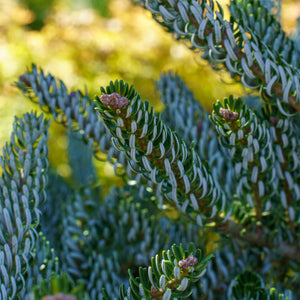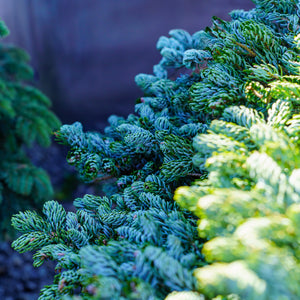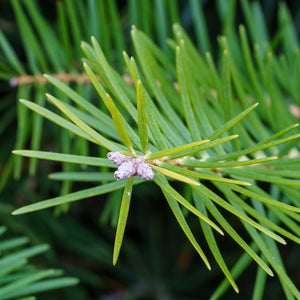The Fir Guide
Fir trees bring a majestic and enduring presence to any landscape. With their tall and straight stature, distinctive cones, and evergreen foliage, fir trees captivate the eye and infuse gardens and outdoor spaces with a sense of grandeur. These remarkable trees are celebrated for their versatility and ability to thrive in diverse environments when provided with proper care and attention. Whether you envision a serene forest retreat or a striking focal point for your garden, fir trees are an excellent choice that will undoubtedly leave a lasting impression.
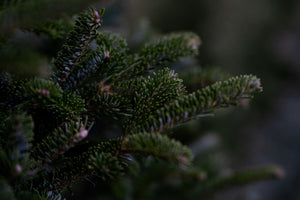
About
Fir trees, belonging to the Abies genus, encompass a diverse group of evergreen trees renowned for their majestic presence and ecological significance. With numerous recognized species, fir trees are found across various regions of the Northern Hemisphere, including North America, Europe, and Asia. These magnificent trees are characterized by their distinct features and vital role in supporting local ecosystems.
One of the defining characteristics of fir trees is their tall and straight trunks, adorned with branches that extend horizontally, creating a symmetrical and stately appearance. The foliage of fir trees consists of needle-like leaves, arranged spirally along the branches, providing a lush green canopy year-round. Some species of fir trees exhibit unique cones that add visual interest to their overall aesthetic.
Fir trees hold great ecological importance, providing habitat, food, and shelter for a wide range of wildlife. The dense foliage of fir trees offers protection to various bird species, while the seeds within the cones serve as a vital food source for small mammals. Additionally, fir trees contribute to the overall health of forest ecosystems by stabilizing soil, regulating water flow, and promoting biodiversity.
These resilient trees exhibit adaptability to different soil types and environmental conditions. While they prefer well-drained soil, fir trees can thrive in a range of sun exposures, from full sun to partial shade. Their ability to withstand harsh climates, including cold winters and high altitudes, makes them an ideal choice for landscapes in temperate and mountainous regions.
Whether used as a majestic centerpiece in a garden, planted in groups to create a visually striking display, or incorporated into mixed borders, fir trees impart a sense of grandeur and natural beauty to any landscape. Popular species of fir trees include the Balsam Fir (Abies balsamea), known for its aromatic foliage and conical shape, and the Fraser Fir (Abies fraseri), known for its pyramid-shaped form, rich green foliage, and delightful scent.
By carefully selecting and nurturing fir trees in your landscape, you not only enhance the aesthetic appeal of your outdoor space but also contribute to the preservation of these remarkable trees and the diverse ecosystems they support.
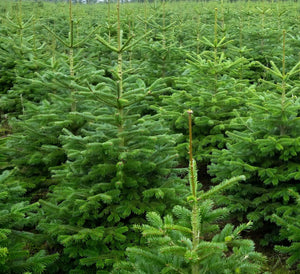
Planting
Fir trees have specific planting requirements to ensure their successful establishment and growth. Here are some general guidelines for planting and caring for fir trees:
Soil: Fir trees thrive in well-drained soil that is rich in organic matter. They prefer a slightly acidic soil with a pH between 5.5 and 6.5. Prior to planting, prepare the site by loosening the soil and incorporating compost or organic matter to improve drainage and enhance soil fertility.
Sunlight: Fir trees prefer full sun to partial shade. Choose a location that receives at least six hours of direct sunlight each day. However, they can tolerate some shade, especially in regions with hot and dry climates.
Watering: Adequate watering is crucial for the initial establishment of fir trees. After planting, water the tree deeply and thoroughly. Provide regular irrigation throughout the first year to ensure the roots have sufficient moisture. Water deeply once or twice a week, adjusting the frequency based on rainfall and soil moisture levels. Avoid overwatering, as it can lead to root rot.
Mulching: Apply a layer of organic mulch around the base of your fir tree to conserve moisture, suppress weed growth, and regulate soil temperature. Use wood chips, bark, or compost as mulch, making sure to keep it a few inches away from the trunk to prevent excess moisture buildup and potential disease issues.
Pruning: Fir trees generally require minimal pruning. Remove any dead, damaged, or crossing branches to maintain a strong and balanced structure. Prune during late winter or early spring while the tree is still dormant, before new growth emerges. Use clean and sharp pruning tools to minimize the risk of infections.
By following these basic planting and care guidelines, you can ensure the successful establishment and healthy growth of your fir trees. With proper care, your fir trees will flourish and bring beauty and a touch of grandeur to your landscape for years to come.
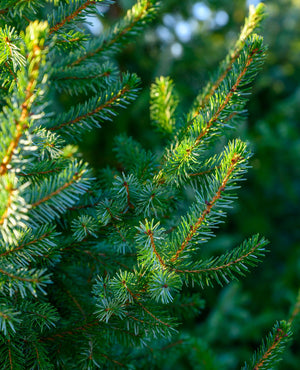
Care
Fir trees require specific care to ensure their optimal growth and health. Here are some general guidelines for the care of fir trees:
Watering: During the growing season, provide moderate watering to your fir trees. Aim for about one inch of water per week, adjusting as needed based on rainfall. It's important to water deeply and thoroughly to promote deep root growth. Avoid shallow watering, which can lead to stress and dehydration. In periods of drought or high temperatures, additional watering may be necessary to keep the soil adequately moist.
Pruning: Fir trees typically do not require extensive pruning. However, it's advisable to remove any dead or damaged branches to maintain the tree's overall health and appearance. You may also shape the tree to achieve the desired size and form. Prune during late winter or early spring before new growth emerges. Use clean, sharp pruning tools to minimize the risk of damaging the tree.
Fertilizing: Fertilizing can promote healthy growth and vigor in fir trees. Apply a balanced, slow-release fertilizer in the spring or early summer, following the recommended application rates and timing provided by the manufacturer. Avoid over-fertilizing, as it can lead to excessive foliage growth and weak branches. It's best to follow a conservative approach and use less fertilizer if unsure.
Soil and Sunlight: Fir trees thrive in well-drained soil that is rich in organic matter. They can adapt to various soil types, but ensuring good drainage is crucial for their optimal growth. Provide full sun to partial shade for fir trees, with at least six hours of direct sunlight each day. Partial shade can be beneficial in hotter regions to protect the tree from excessive heat.
Mulching: Apply a layer of organic mulch around the base of your fir tree to conserve moisture, suppress weed growth, and regulate soil temperature. Use wood chips, bark, or compost as mulch, keeping it a few inches away from the trunk to prevent moisture accumulation and potential rotting.
Pests and Diseases: While fir trees are generally resistant to pests and diseases, it's important to monitor for common issues such as aphids, spider mites, or fungal diseases like root rot. Regularly inspect your tree for any signs of damage or disease and take appropriate measures if needed. Maintaining overall tree health and providing good air circulation can help prevent and manage pest and disease issues.
By following these basic care guidelines, your fir trees will thrive, providing beauty, evergreen foliage, and a sense of tranquility in your garden for years to come.
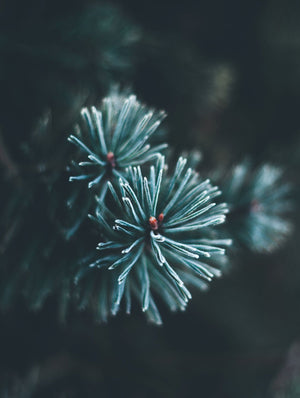
How To Use
Fir trees offer versatility and can be used in multiple ways to enhance your landscape. Here are some recommendations based on their characteristics:
Focal Point: Use a single fir tree as a stunning focal point in your landscape. With their tall and elegant stature, fir trees command attention and create a captivating centerpiece for your garden.
Evergreen Backdrop: Plant fir trees strategically to create a beautiful backdrop for other plants in your garden. Their dense foliage, ranging from deep green to silvery-blue, provides a year-round display and adds depth and texture to the overall landscape.
Windbreak: Take advantage of fir trees' dense branches and thick foliage to create a natural windbreak. Plant a row of fir trees to shield your garden, outdoor living spaces, or home from strong winds, providing protection and a more comfortable environment.
Privacy Screen: Utilize the dense foliage of fir trees to create a natural privacy screen in your landscape. Plant them in a row along your property line to establish an attractive and effective barrier that enhances privacy and adds visual appeal.
Wildlife Habitat: Fir trees offer valuable habitat for various wildlife species. Their dense branches provide shelter and nesting opportunities for birds, while their seeds and needles can be a food source for small mammals. By planting fir trees, you can create a thriving habitat that supports local wildlife and adds vitality to your garden.
Christmas Tree: Fir trees are popular choices for use as Christmas trees due to their symmetrical shape, lush foliage, and pleasant fragrance. Consider planting fir trees specifically for future use as stunning centerpieces during the holiday season, adding a touch of tradition and festive spirit to your landscape.
By incorporating these suggestions into your landscape design, you can fully utilize the beauty and practicality of fir trees. Whether as focal points, windbreaks, privacy screens, or wildlife habitats, fir trees will enhance the aesthetics and liveliness of your outdoor environment, adding a touch of evergreen charm throughout the year.
Conclusion
Fir trees are captivating and versatile additions to any landscape. Known for their evergreen beauty, graceful form, and ecological significance, fir trees bring a sense of natural splendor and practicality to your outdoor space. By following proper planting and care practices, you can unlock the full potential of fir trees and create a lasting impact on your landscape. Whether you desire an impressive focal point or a serene backdrop, fir trees excel in various roles. Plant a single fir tree to command attention and showcase its tall stature and lush foliage, or group multiple fir trees together to create a breathtaking display. With their dense branches and thick foliage, fir trees provide excellent windbreaks, protecting your garden or outdoor living areas from harsh winds. Their year-round greenery also offers a vibrant backdrop for other plants, adding depth and texture to your landscape. Furthermore, fir trees contribute to wildlife habitats, providing shelter and food sources for birds and small mammals. Embrace the festive spirit by selecting fir trees specifically for use as Christmas trees, infusing your home with the fragrance and charm of the holiday season. By ensuring proper soil conditions and sunlight exposure, you can cultivate thriving fir trees that will enhance your outdoor environment for years to come. With their beauty, versatility, and ecological benefits, fir trees bring a sense of tranquility and natural elegance to your landscape, making them a truly rewarding addition to your outdoor space.







